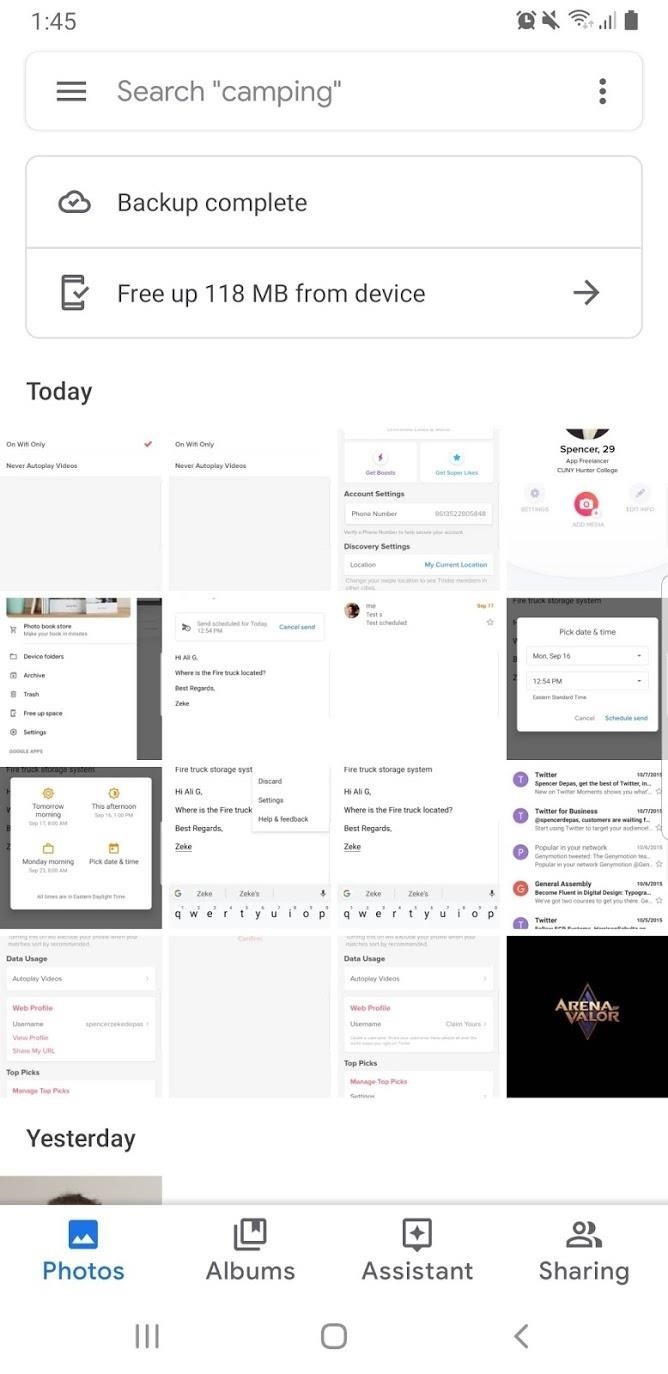News and New Product Briefs (March 10, 2000)
CodeVizor prints class hierarchy charts
Raleigh Group International (RGI) is distributing CodeVizor, a class-hierarchy visualization tool for Java and C++. CodeVizor generates large class hierarchy charts of projects and specializes in printing these charts. The application allows developers to print wall-size charts on color printers, standard printers, and plotters. The product was created by TeamVizor Technologies, a company created by the partnership of RGI and Interface Technologies.
CodeVizor allows software developers to view the class hierarchy of Java and C++ projects. The application also lets programmers customize the hierarchy by changing the size, font face, or color. Aspects of often-used class libraries can be created and reused. Class hierarchies can also be generated directly from JAR, Java Zip, and class files without source code.
CodeVizor is currently available for 99.
Find out more about CodeVizor:
Espial releases Architect 2.0
Espial has released Espial Architect 2.0, a rapid application development (RAD) environment for generating PersonalJava and embedded GUIs. Architect helps developers create feature-rich applications for limited-resource environments. The application accomplishes this task by including Espial Espresso 3.2, a Java-based lightweight GUI toolkit. An Instant User Interface (UI) feature allows developers to immediately view changes to schemas, without requiring lengthy compilations. Architect 2.0’s internationalization capabilities allow developers to keep multiple iterations of a single UI, which is helpful when creating an application to be deployed in many countries.
Download a free evaluation copy of Architect 2.0:
TestMyBeans.com unveils EJB testing solution
TestMyBeans.com has unveiled the TestMyBeans Product Suite, a software solution meant for testing Enterprise JavaBeans (EJB) middleware applications. The Java-based offering is optimized for IBM WebSphere and BEA WebLogic application servers and allows developers to test the functionality and scalability of EJB middleware offerings prior to system integration
TestMyBeans relies on AutoGen technology to create multithreaded Java test clients that use the developer’s methods set and then automatically establishes timers for load testing. The TestMyBeans Product Suite imitates loads on EJB applications by contacting the EJB as an actual application client would. SyncLoad technology allows many test client threads to be created, which places large loads on an EJB application being tested. After a test, the software generates performance graphs outlining response times, transactions per second, response time per Method, and number of exceptions as the number of virtual clients is increased. This features helps administrators determine baseline values and compare baseline performance to test case performance.
Pricing for the complete TestMyBeans Product Suite starts at 0,000.
Download a free trial version of TestMyBeans:
FioranoMQ targets B2B market
Fiorano Software has announced FioranoMQ version 4.0 B2B Edition, a Java-based enterprise messaging server. FioranoMQ 4.0 now offers Web-based users access to enterprise messaging systems. An XML Interoperability Toolkit allows developers to build scalable applications capable of communicating with external systems, such as customers or suppliers. Security features have been enhanced with the addition of a message filtering system that allows administrators to create software firewalls. FioranoMQ 4.0 meets Java Message Server 1.02 specifications.
FioranoMQ 4.0 facilitates real-time application integration between partners, customers, suppliers, and distributors.
Find out more about FioranoMQ 4.0 B2B Edition:
BEA unveils WebLogic Commerce Server 2.0
BEA Systems has unveiled its WebLogic Commerce Server 2.0, which relies on Enterprise Java Beans (EJBs) to offer Web users customized services and information. WebLogic Commerce Server’s EJB components provide different ecommerce application services, such as inventory management, shopping cart, order management, order entry, and shipping.
The BEA WebLogic Commerce Server’s component architecture allows companies to quickly deploy solutions that can be changed or expanded as the organization’s needs change. Declarative rules can be applied to business functions, such as ordering, pricing, or shipping, to change an ecommerce application’s behavior. The application is compliant with the Java 2 Enterprise Edition standard.
BEA WebLogic Commerce Server 2.0 is expected to be available as a download for NT and Solaris in mid-April. The Server is priced at 0,000 per CPU.
Find out more about BEA WebLogic Commerce Server 2.0:
Breakout Software ships MonitorIT 2.0
Breakout Software is shipping MonitorIT 2.0, a Web-based remote performance monitoring tool. MonitorIT 2.0 has added a ServerWatch feature, which monitors network and Web services on any server and any operating system.
ServerWatch features include:
- Monitors one or more servers for response performance and availability
- Polls servers to verify response times for services such as FTP, HTTP, POP, SMTP, and DNS
- Uses PING to test a machine’s availability
- Monitors servers operating any OS without requiring an agent
- Generates reports and graphs for any time-frame
- Tracks availability and response times
- User determines checking rate per service and server
ServerWatch is compatible with MonitorIT’s CounterWatch feature, which examines usage and performance data on 32-bit Windows systems and servers. It also allows administrators to store their findings in Microsoft SQL Server 7 databases.
MonitorIT prices start at 95.00 for a MonitorIT Server and 3 Agent license. Additional license packs range from 49.00 for five Agent licenses to ,695.00 for 100 Agent licenses.
Find out more about MonitorIT 2.0:
Solutionsoft announces HelpBreeze
Solutionsoft has announced the availability of its HelpBreeze JavaHelp Edition 1.0, a stand-alone Java-based help authoring tool for Sun’s JavaHelp. HelpBreeze provides developers with the tools for creating and maintaining a JavaHelp system in a single environment.
Useful HelpBreeze features include:
- WYSIWYG HTML editor for creating help content
- Access to the HTML source code
- Drag and drop table of contents and index creation and maintenance
- Project management features monitor and maintain files
- Test/Preview mode allows developers to test the help system in the editing mode
HelpBreeze JavaHelp Edition 1.0 will be available for free through June 1, 2001.
Download HelpBreeze JavaHelp Edition 1.0:
SilverStream ships Version 3.0
SilverStream Software is shipping its SilverStream Application Server 3.0, which is based on Java 2 platform Enterprise Edition (J2EE) standards. Version 3.0 offers numerous J2EE technologies, including Servlets, Enterprise JavaBeans, JDBC 2.0, JavaServer Pages, JNDI, and Java Transactions, and supports XML and CORBA 2.3.
SilverStream Application Server 3.0 features include:
- Access to development commands via SilverCommand utility
- CORBA/COM support via the SilverStream JBroker object request broker (ORB)
- Remote and distributed debugging capabilities
- Enhanced deployment capabilities (including security templates, cluster management features, and realtime performance monitoring)
Pricing structures vary. The Developer’s Edition starts at 00 for a single machine, while an Enterprise Editions with one processor and unlimited users starts at 5,000.
Find out more about the SilverStream Application Server 3.0:
ARTiSAN Software enhances Real-time Studio
ARTiSAN Software has enhanced its Real-time Studio 3.1 modeling suite with an improved Java code generator. Real-time Studio 3.1 offers a Java code generator that generates more efficient code and includes a Design View tab that refreshes the Synchronizer View more quickly. An updated synchronizer allows changes to be integrated more quickly. Real-time Studio 3.1 also simplifies re-use in legacy systems by strengthening the external class mechanism. It includes a more robust find tool and adds grid lines to help align diagrams.
A single-user copy of Real-time Studio Professional is priced at ,995 and a single-user version of Real-time Modeler is ,495.
Find out more about Real-time Studio:
SageWave 4.0 hits market
SageMaker has released SageWave 4.0, an integration platform. SageWage is a browser-based offering that gathers, organizes, and blends data from outside an organization and then presents it internally to employees. The SageWave integration features rely on the use of the Java Messaging Service (JMS) API and XML to make a distributed content-based routing architecture.
SageWave’s SageBus integrates the content. It offers administrators a Display Engine to show different aspects of the architecture to end users. All display elements are deemed XML components, so all elements of the data store become XML. SageBus uses the JMS API to move information through an organization. The SageCommunity is a collaborative setting for sharing ideas and information. A My SageWave feature allows users to customize their browser with specialized navigation tools or realtime news.
Find out more about SageWave 4.0:
Sybase updates SQL Anywhere Studio
Sybase has updated its SQL Anywhere Studio to version 7.0. The mobile database and synchronization technology is optimized for laptops, workgroups, intelligent appliances, and handheld devices. SQL Anywhere Studio offers new features geared toward speedy development and deployment cycles.
New features of Version 7.0 include:
- Bidirectional data synchronization between enterprise systems and remote devices
- Improved mobile database technology
- Adaptive Server Anywhere, a small footprint mobile DBMS
- Support for new platforms, such as Java, WindRiver VxWorks, and EPOC
Sybase SQL Anywhere Studio 7.0 is expected to ship in late March. A single-user license is priced at 99, and a 10-user license is 99.
Check out the Sybase SQL Anywhere Studio 7.0 datasheet:
Hipbone partners with Lipstream
Hipbone has announced a strategic partnership with Lipstream. The agreement will incorporate Lipstream’s Voice-over-IP technology into Hipbone’s Java-based Web co-navigation service. The combined solution targets ecommerce Web sites and allows sales reps or customer service agents to co-navigate the Web with a customer and have a realtime live voice discussion. Hipbone and Lipstream administer and coordinate the service for their customers. The user interface is incorporated into existing browsers that users are already familiar with, which helps keep training costs down.
Check out a Hipbone:




